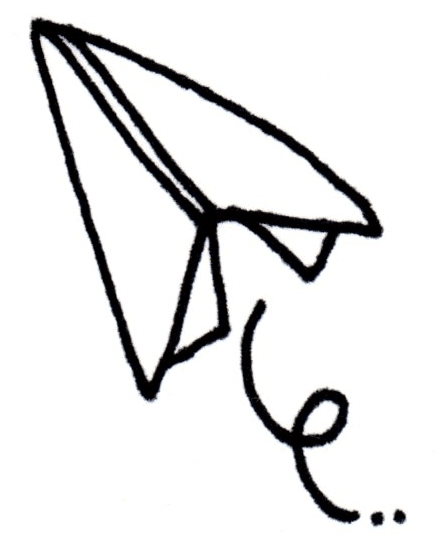Avoiding baby eczema triggers #2: Bathtime



Bathtime should be a relaxing and fun time when babies can bask in Mum and Dad’s undivided attention before bedtime. However, for eczema babies (and their parents) it can be one of the most stressful parts of the day. While it can be tempting to skip the bath, bathing is really important in keeping eczema skin as healthy as possible. Also having a consistent bedtime routine really does help little ones drop off to sleep more easily. And where sleeping is concerned, a baby eczema sufferer needs all the help he can get.
Why bath-time is so important in controlling baby eczema
Regular bathing is a really important factor in keeping an eczema baby’s skin healthy. The water washes away the residues of previous treatments and cleans off any loose scales and crusts so that further treatments can sink into the skin effectively. It also removes any allergens and reduces bacteria that can lead to infections. However, bathing can also dry out eczema-prone skin and aggravate the eczema itch.
- Top tip: If your eczema baby is really distressed when his or her body touches the water, check out our article on eczema friendly laundry as this is a classic symptom of detergent allergies.

A note on bathing frequency for eczema babies
This is one of those areas where different doctors will tell you different things. Current medical thinking is that an eczema baby should be bathed daily to keep skin clean. However, some older doctors are still advising parents to bathe eczema babies less frequently to avoid drying the skin out.
Some scientific research has been carried out into the subject, including a study titled ‘Frequent versus infrequent bathing in paediatric atopic dermatitis: a randomised clinical trial’. This study was conducted with two groups of children, aged between six months and 10-years-old, with atopic dermatitis. One group was bathed twice daily, and the other twice weekly. The study concluded that bathing twice daily was more effective at improving disease severity than bathing twice weekly.
The National Eczema Association recommends what they call the “Soak and Seal” method of treating eczema. This involves bathing in lukewarm water, then applying any topical medication and a moisturiser within three minutes of getting out of the bath – while the skin is still damp – to seal in moisture.
As with all things eczema related, it is worth experimenting to find out what works best for your baby. We find that our sweaty little boy does best with daily baths in the summer, but that we can reduce the frequency in the winter.
Our top tips for baby eczema friendly bathing
Here are the things that we used to keep our eczema baby happy and relaxed at bath time:
Check water temperature
Use warm water (no higher than 37°C) because hot water will strip the skin’s natural oils faster. Hot water can also aggravate rather than soothe itchy eczema. We find it difficult to judge water temperature accurately so rely on a bath thermometer (which doubles as a bath-toy).Keep baths short
Keeping the time your eczema baby is in the water between 5 to 10 minutes will ensure that they get maximum cleaning benefit while minimising the drying effect. If their skin has gone wrinkly, they’ve been in the water too long!Use a prescription bath-oil
These oils cover your eczema baby’s skin with a protective film that is meant to stop the bathwater from stripping it of natural oils. Watch out for ones with added fragrance as these can irritate baby eczema. When using prescription bath oils, be careful to make sure that you have a firm hold of your little one as these oils will make it difficult to get a good grip. We found that having two adults made oily bath times a lot easier.Avoid toiletries
Even ‘gentle’ baby washes and shampoos often contain common irritants for baby eczema. In particular, watch out for sodium laureth sulphate (SLS or SLES), fragrances, ingredient that ends in –parben and either Methylchloroisothiazolinone or Methylisothiazolinone (MCI or MI). According to National Eczema Association, other common toiletry ingredients that should be avoided are essential oils, urea, lanolin, retinoids, ethanol, cocamidolpropyl betaine, and propylene glycol. You can read more about skincare ingredients to avoid here. While there are plenty of eczema-friendly baby washes about, we find that using plain water and a microfibre wash mitt kept our eczema baby clean on all but the grubbiest days. You can use emollients as a soap substitute, but we much prefer the Weleda baby wash as it doesn’t make for such a greasy baby. To be on the safe side, when we use a baby wash, we rinse the kids off with fresh water.Try using a tummy tub
When our eczema baby was small, we found that using a sit-up baby bath rather than a conventional baby bath worked really well. We think it was because his whole body was in the water so he never really felt that slightly tickly, irritating feeling of water evaporating off wet skin. Also, because he was well supported by the sides of the tub it was easier for us to have a hand free to stop any scratching before it happened. His upright body position also meant that he could see what was going on around him and it didn’t take him long to figure out how to splash!Stopping the scratching
An eczema baby will make the most of any opportunity to scratch and bath time offers just that opportunity. Having two adults to one eczema baby at bath-time can really help (so long as your bathroom is big enough that you don’t end up tripping over each other!). We had one person in charge of our eczema baby’s hands and the other doing everything else! As your baby gets older, the distraction of bath toys can keep hands (and minds) from scratching. Our kids are entertained for ages by just holding their hands under the running tap! Putting your little one in a swimsuit can work really well. Just wip it off at the end for a quick wash. You can also use a set of ScratchSleeves to keep really determined hands covered up. We even have a version designed especially for use in the bath called SplashSleeves.Gentle drying
We wrapped our eczema baby in a hooded towel and cuddled him dry. The towels with the hoods in the centre of the long side (rather than in the corner) are great for this as you can keep scratchy hands securely wrapped up. We’d pat dry any remaining damp patches. We’re recently discovered that super-absorbent micro-fibre travel towels are fantastic for drying the super sore bits behind our five-year old’s knees. One gentle pat and they are completely dry.Moisturise quickly and generously
Stroke on your baby’s moisturiser or emollient as soon as they are dry and the skin has cooled. This is when the skin has maximum levels of moisture. The emollients will lock in the moisture and replace any natural oils lost in the bath water before the eczema itch can set in.Rinse the tub thoroughly after cleaning
Bathroom cleaners are strong degreasers and any residues can have a drying effect on baby eczema. Make sure that you rinse the bath tub thoroughly after cleaning. We play it safe by using skin friendly bathroom cleaners like Ecover or Method.
Bath products (especially those containing parbens, methylisothiazolinone or methylchloroisothiazolinone) are a major baby eczema trigger in our family. By avoiding them we can keep our kids’ eczema largely under control. What works for your family?
Here at ScratchSleeves, we don’t just share our experiences of bringing up an eczema child (and favourite allergy-friendly recipes), we also manufacture and sell our unique stay-on scratch mitts and PJs for itchy babies, toddlers and children. We now stock sizes from 0-adult years in a range of colours. Visit our webshop for more information.
The Calm Skin Guide
Love our blog? It's also available in book format with:
- First hand accounts from parents & medical professionals
- Easy navigation
- Comprehensive index
- Additional material
Signed copies available at no extra cost
Written by:
Interesting article? Don't keep it to yourself...
Read next...
You may also find helpful...
Quick buy


Multi Buy Discount

Spend between £30 - £60 and save 5%
Spend between £60 - £120 and save 10%
Spend over £120 and save 15%
Discount automatically applied at checkout
No Quibbles Guarantee

ScratchSleeves abide by a no quibbles guarantee.
Free UK Postage

Free packing and postage on all UK orders. For overseas orders to Europe postage is from £3.50, to USA is £6.50 and to the rest of the world, from £3.75.






